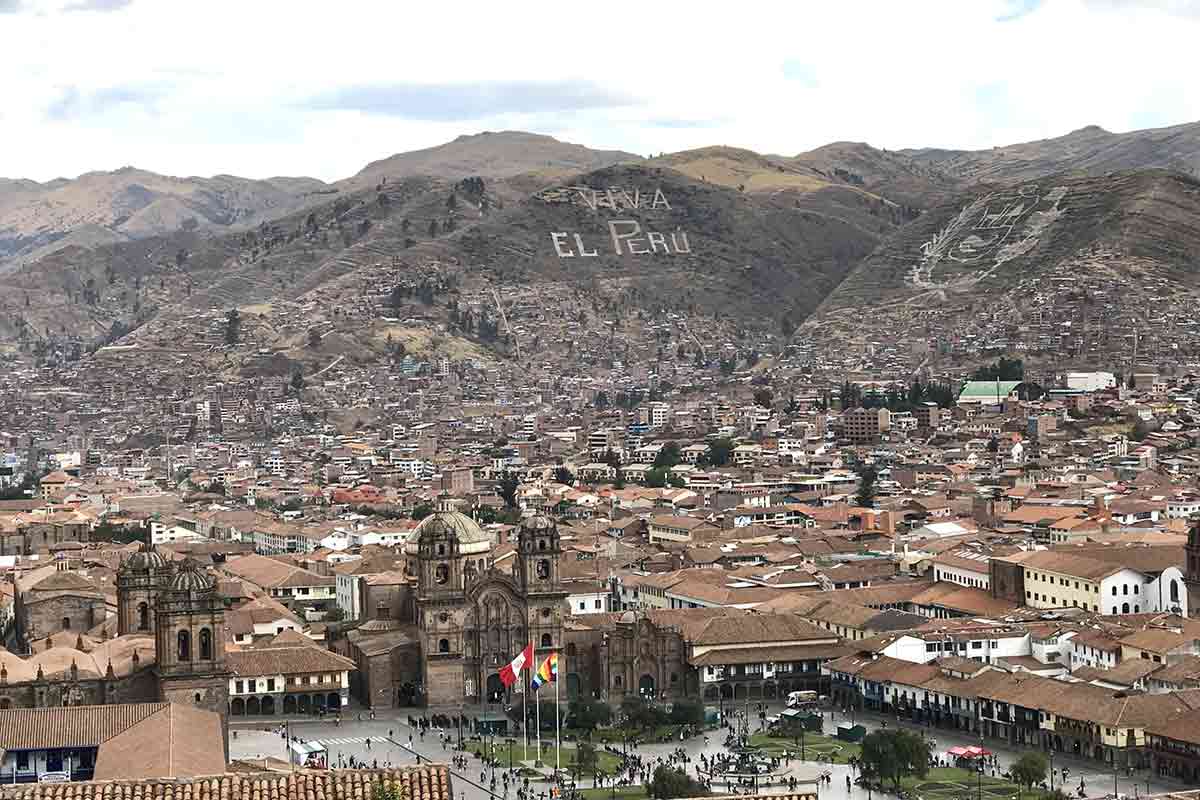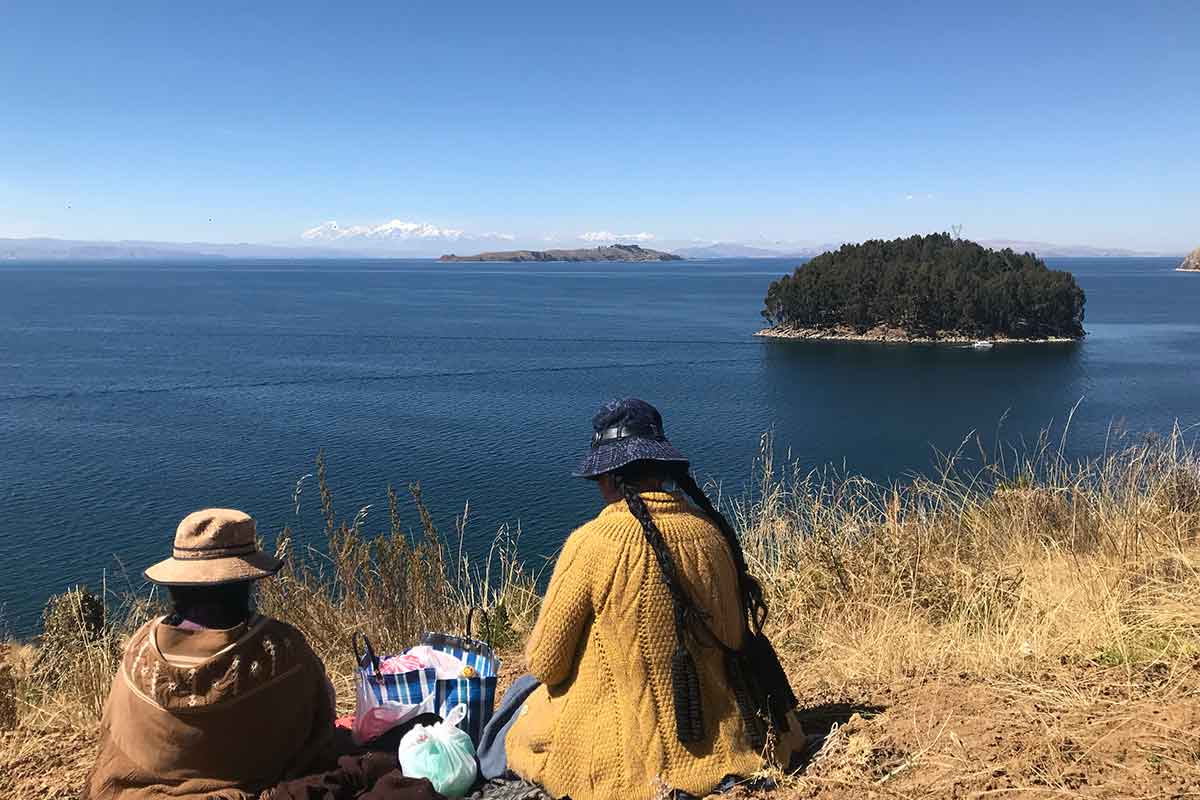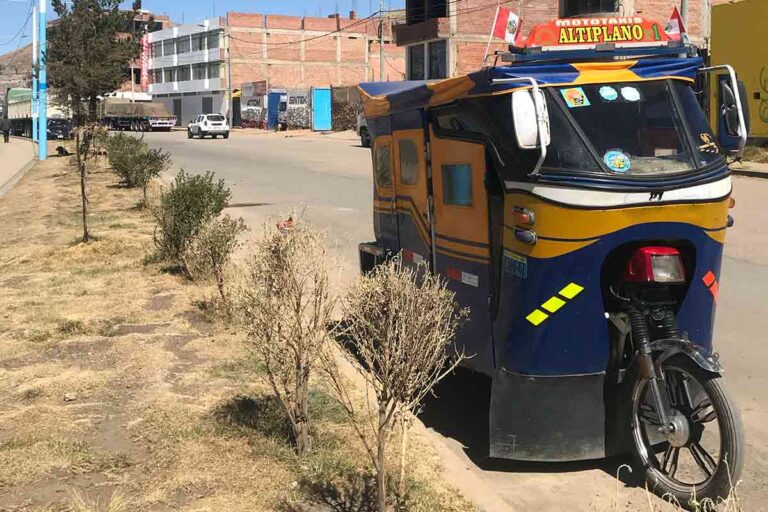How to get from Cusco to Lake Titicaca
Are you looking for the best way to get from Cusco to Lake Titicaca?
Lake Titicaca is a really surreal place. Straddling both Peru and Bolivia, it’s the highest-altitude navigable lake on the globe and is known for its diverse range of stunning islands.
Amongst these we can find the floating Uros Islands which are made entirely out of Totora Reed, as well as the Islas del Sol and Luna which are home to various ruins.
Cusco to Lake Titicaca
In this guide we’ll explore some of the most popular ways of getting from Cusco to Lake Titicaca. We’ll also take a look at where to stay as well as some other tips based on our time spent here.
Lake Titicaca Quick Summary:
- 📍 Where is it: Southern Peru / Northern Bolivia
- 🗺 Difficulty Getting There: Easy
- ⏱ Time needed: 2-4 days
- ☀️ Best Time to Visit: September-October
Where is Lake Titicaca?
Lake Titicaca is located in the extreme south of Peru within the region of Juliaca, and also in the north of Bolivia (however in this guide we’ll focus just on the Peruvian side).
This massive lake looks more like an ocean, and when heading on a boat ride you’ll be able to make out various Andean snow-capped peaks between the terraformed hills.
The altitude here is pretty high, given it’s located right on the Andean plateau. Lake Titicaca has an average altitude of 3800m, so you’ll want to take your first couple of days easy (as well as bring lots of warm layers).
Is Lake Titicaca worth visiting from Cusco?
Both destinations are located within the popular touristy loop in the south of Peru, and it’s ideal to visit Lake Titicaca after Cusco.

Firstly you’ll already be adjusted to the high altitude, so you can walk around fine in Puno and also when heading on hikes around the different islands (although the Uros is best to do first as it’s a really chill boat ride in and around).
Lake Titicaca is home to various ancient cultures, and here we can find a mix of both Inca and Aymara descendants. They still wear the same traditional clothing and even follow the same cultural practices as they once did all those years ago.
On the Uros Islands for example we can meet 3 different tribes that live full-time on these islands; the Uru-Chipaya, Uru-Murato, and Uru-Iruito.
You can read our guide on why Lake Titicaca is worth visiting to learn more about why we believe you should plan to see Lake Titicaca while in South America.
How far is Lake Titicaca from Cusco?
Puno (the best base camp in Peru to explore Lake Titicaca) is located roughly 385 km south of Cusco.
The bus takes around 8 hours to arrive, where you’ll travel through the Andes with some pretty impressive vistas from the window (although it’s best logistically to take the night bus).
Unfortunately buses here tend to keep air-conditioning on during the night (which is bizarre since it’s already freezing outside), so for this reason you’ll want to gear up with blankets, extra layers and anything else if you struggle with the cold.
It may be worth taking Coca Leaves on the journey too, which is a great method of preventing altitude sickness.
Where to stay in Lake Titicaca?
Lake Titicaca is a massive area, so it’s first best to narrow down to make things easier. As already mentioned, Puno is the main gateway for exploring the lake and region, so it makes sense to base ourselves here.
Those who want to keep costs low will love The Maya Inn, which offers affordable private rooms along with a hot en-suite shower. It’s also located close to the harbor which is great for easy access to the various day tours you can do here.
If you want more comfort, then the Colonial Plaza Hotel is a great choice without breaking the bank. Located close to the Plaza de Armas, you’ll also have a buffet breakfast on-site as well as your own spacious private bathroom.
Travelers who want to treat themselves to more luxury will want to stay at the Hotel Hacienda Plaza de Armas. Located right in the main square, you’ll have everything you need within footsteps.
You’ll also be staying in a sleek king-sized room with a scenic balcony, along with a full buffet breakfast laid out daily.
Got travel insurance for Peru?
How to get from Cusco to Lake Titicaca
Getting between these two destinations is relatively simple, given its a popular journey for travelers to make. Through our experience here we’ve found 3 main ways of making the trip (at this time of writing).
Bus from Cusco to Lake Titicaca
Out of all the options available, taking the bus remains the best option for backpackers to get from Cusco to Lake Titicaca (and overall the best for those heading around Peru).
The journey takes around 7-8 hours, and the majority of buses leave after 9:00pm (which is the best time to travel given you’ll save precious day-time hours for exploring). The cost of a ticket begins at roughly $10.
There are various bus companies to choose from, and you can either book your ticket online with RedBus or head directly to the bus terminal in Cusco. Peru Dorado and Transportes Libertad are some of the best providers, who remain cheap and have the “Bus Cama” option (which are seats that can recline to almost 180°).
Driving from Cusco to Lake Titicaca
Another option (although much more unorthodox) for travelers is to rent your own wheels and explore the south of Peru independently.
You can drive from Cusco to Puno in around 7 hours, although it’s best to head during the day (given some rural stretches can be dangerous without great lighting around).
We highly recommend you only do it this way if you have experience already driving around much of Peru. This is because road blockages and less-than-stellar driving is common, which may otherwise be pretty stressful.
Organized Tour from Cusco to Lake Titicaca
This option is worth considering for many reasons. Firstly you’ll find the prices are quite competitive since there’s various companies serving this experience, and also as it’s perfect for travelers who don’t have as much time available.
Usually tours will pick you up in Cusco, where you’ll visit a novel gem or two in the Juliaca region before arriving in Puno and spending a day out on Lake Titicaca.
We highly suggest that you book this organized tour, where you’ll spend two days seeing all of the best highlights including the Uros Islands and Taquile Island. You’ll also have all meals, transport and an overnight stay in Puno included.
How to get around Lake Titicaca
Inside Puno you’ll find the mototaxis to be the best option for getting around. They are super inexpensive, and shouldn’t cost anymore than 5-10 Soles for a ride around the city.
This makes it easy to see both the port area and city highlights without breaking the bank (such as the Plaza de Armas).
The boats can be cheap too, especially when going to the Uros islands. However the other longer ferries (to other islands) can get expensive, especially if you choose the private options.
Those heading south to Copacabana in Bolivia (which is located on the southern shore of Lake Titicaca) are best going with the bus. From Puno to Copacabana it will take around 5-7 hours, including the necessary time to pass the Kasani border point.
If this is your plan, then be sure to read our joint Peru and Bolivia Itinerary for more ideas on how to plan your trip.
Getting from Cusco to Lake Titicaca
That’s all for this guide on how to get from Cusco to Lake Titicaca.
This epic lake is bathed in history, with the Inca themselves having considered it an important site. Here we can explore various ruins, floating islands as well as simply enjoying some awesome landscapes when exploring around the lake.
In this guide we’ve explored how to get from Cusco to Lake Titicaca, as well as where to stay and what to do.
Are you visiting Lake Titicaca as part of a longer trip through Peru? Then be sure to read our Backpacking Peru Itinerary for more ideas on what to see and do.
👉🏽 P.S. If you’ve found this guide helpful, buy us a coffee here to say thanks! Or, support us by downloading our South America Travel Bible to get our best content.
“Dear traveler! Some links in this post contain affiliate links. Meaning, if you click through and make a purchase, book a hostel or sign up for a tour, we may earn a small commission at no additional cost to you. Your support means a lot and helps us to carry on traveling and maintaining the quality of this site for you.”












